UAE banks dig in for new era
11 April 2025

Gulf decision makers, like their counterparts elsewhere in the world, are gauging the potential impact of the world’s new tariff regime.
Amid the global economic turmoil emanating from Washington DC, UAE banks have reason to be confident about their prospects of withstanding the negative effects, after a strong 2024 that saw double-digit credit growth and solid profits across the board.
Full-year loan growth stood at 11% in 2024, notes ratings agency Fitch Ratings, while UAE banks’ profits reached a record-high level, with a 19.1% return on average equity.
Surprising success
Loan growth surprised on the upside, reflecting stronger activity from government-related entities (GREs), which has provided good business for Emirati banks. For example, majority government-owned Emirates NBD had almost one-quarter of its loan book exposed to the Dubai government and its GREs.
The broader outlook is positive for UAE banks in 2025. Amid healthy operating conditions and robust liquidity, lending growth should remain close to double figures this year.
The combined net income of Fitch-rated banks was AED80bn ($19.8bn) in 2024, up from AED76bn ($18.8bn) in 2023. This rise was driven by a 10% expansion of the banks’ pre-impairment operating profit, contained loan impairment charges – due to the favourable operating environment – and strong coverage of already crystallised problem loans at most banks, said Fitch Ratings.
The UAE’s largest bank, First Abu Dhabi Bank (FAB), reported a 13% year-on-year increase in pre-tax profits to AED19bn ($4.7bn), supported by revenue growth of 15%.
“UAE banks are at the top of the cycle,” says Anton Lopatin, UAE bank analyst at Fitch Ratings. “At Fitch, we’ve upgraded a lot of standalone ratings for banks in the last 24 months. Together with other factors that reflected that in the last two years we have seen some the highest profits ever in the UAE, because of the strong liquidity and the healthy economic environment.”
Although profitability is expected to decrease marginally in 2025, UAE banks will continue to benefit from solid internal capital generation and high shareholder support, according to S&P Global, another ratings agency.
Taxes, rates and regulations
UAE banks, like other companies active in the country, have also had to cope with the introduction of corporate tax, imposed in mid-2003 at an average 9% rate. Even so, UAE banks realised a high return on equity in 2024, despite it being the first full year in which banks paid corporate tax.
UAE banks have benefited from the higher-for-longer interest rates, an avenue of earnings that is gradually closing off in light of the US Federal Reserve’s protracted series of rate cuts. Nonetheless, analysts see the impact remaining supportive through 2025.
“The market consensus is that in 2025, there will be a maximum of two cuts in interest rates. That would mean banks would likely report another return on average equity close to 20% again, in line with what we saw last year,” says Lopatin.
Another source of support is the new credit risk management standards introduced by the UAE Central Bank in November, which are likely to strengthen banks’ long-term creditworthiness.
“From a ratings agency perspective, this is positive, as … target banks have to become more prudent in terms of how they classify loans, and how they book provisions against new impairment cases. This means they should be more conservative than they used to be,” says Lopatin.
The standards are aimed at improving the transparency of the banks’ asset quality and ensure stronger provision coverage for problem loans. Consequently, capital and profitability metrics should face less pressure in times of stress, notes Fitch.
“The Central Bank of the UAE targets the sector average impaired loan ratio to be less than 5% in the long-term. The current average is 4%, but we are in the positive part of the cycle,” says Lopatin.
Some banks may report higher Stage 2 or Stage 3 loans ratios due to the new standards, but Fitch maintains its forecast sector-average impaired loans ratio at 4% for 2025 because the impact on most large and medium-sized banks is likely to be limited, and robust growth should continue to dilute increases in Stage 3 loan ratios.
Pressure has been exerted on banks to offload some of their bad loans, most notably in Abu Dhabi.
The process got rolling in 2023, when Abu Dhabi Commercial Bank (ADCB) offloaded a $1.1bn loan portfolio to US investment fund Davidson Kempner, as part of a move to rid its balance sheet of corporate defaults. The lender is now looking to package off more non-performing loans by the end of 2025 and is reported to be in the early stages of studying such a deal.
In January, FAB also announced its intention to offload some impaired loans and is reportedly looking to sell its portfolio of non-performing loans worth about $800m to Deutsche Bank. This process mirrors what is happening in Saudi Arabia, where the authorities want banks to securitise some of the impaired loans.
Opportunities abroad
While the domestic economic upturn and the servicing of GREs’ credit needs will underpin future Emirati bank growth, lenders also continue to look out for new opportunities beyond the GCC home market.
Turkiye is one of the more promising prospects for UAE banks to grow their footprints. Although an attempt last year by FAB to acquire a stake in the country’s fourth-largest private bank, Yapi Kredi, did not go through, in January Dubai Islamic Bank announced an increase in its shareholding in Turkish financial services provider TOM Group from 20% to 25%.
Meanwhile, Emirates NBD and FAB acted as coordinators and bookrunners on a $1.2bn loan for Turkiye Wealth Fund in March of this year. The sovereign fund raised a two-year syndicated loan from 20 banks.
Overseas expansion, mixed with continued domestic credit growth opportunities, should help UAE lenders maintain their recent performances – whatever global headwinds result from US President Donald Trump’s new era of trade barriers.
MEED’s May 2025 report on the UAE includes:
> GOVERNMENT & ECONOMY: UAE looks to economic longevity
> BANKING: UAE banks dig in for new era
> UPSTREAM: Adnoc in cruise control with oil and gas targets
> DOWNSTREAM: Abu Dhabi chemicals sector sees relentless growth
> POWER: AI accelerates UAE power generation projects sector
> CONSTRUCTION: Dubai construction continues to lead region
> TRANSPORT: UAE accelerates its $60bn transport push
Exclusive from Meed
-
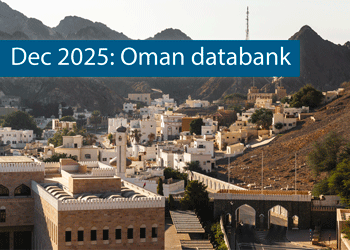 Oman’s growth forecast points upwards
Oman’s growth forecast points upwards24 December 2025
-
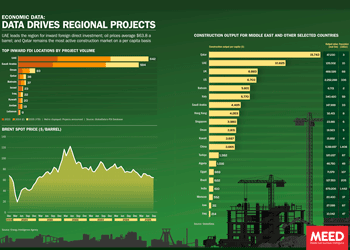 December 2025: Data drives regional projects
December 2025: Data drives regional projects23 December 2025
-
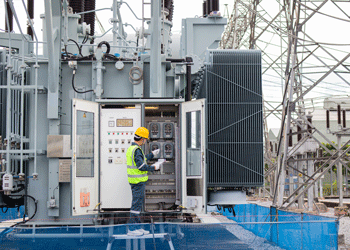 Local firm bids lowest for Kuwait substation deal
Local firm bids lowest for Kuwait substation deal22 December 2025
-
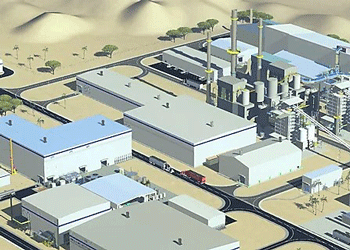 Saudi-Dutch JV awards ‘supercentre’ metals reclamation project
Saudi-Dutch JV awards ‘supercentre’ metals reclamation project22 December 2025
-
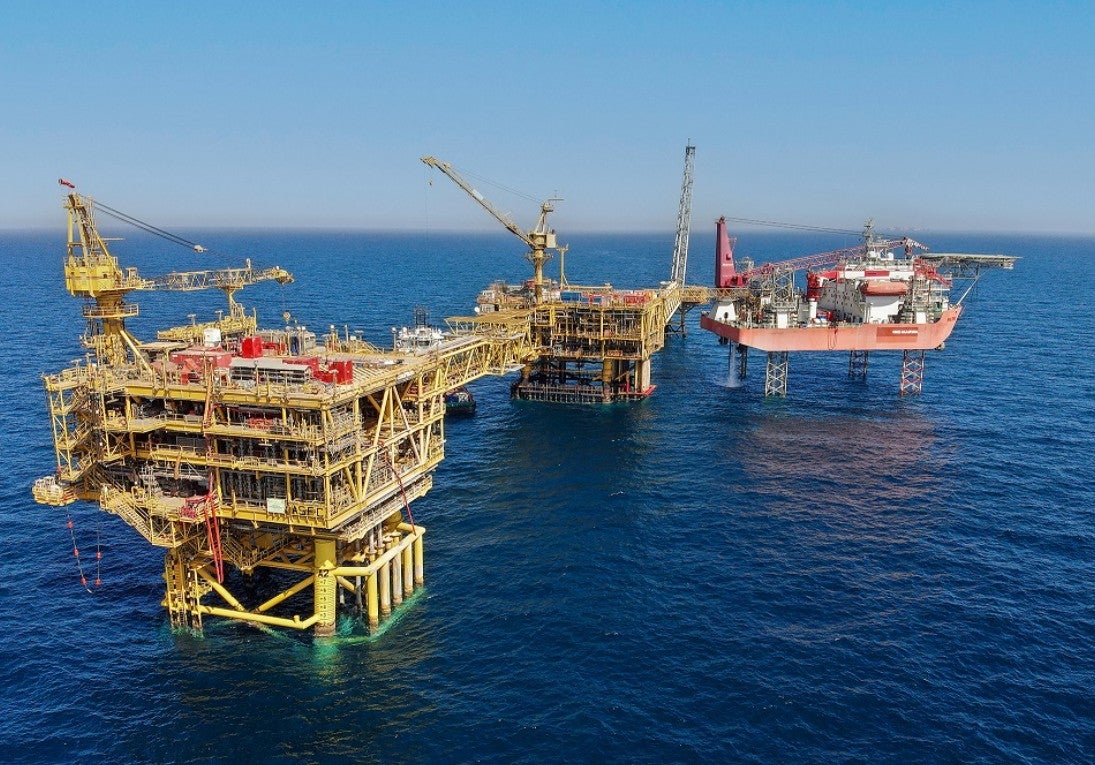 QatarEnergy LNG awards $4bn gas project package
QatarEnergy LNG awards $4bn gas project package22 December 2025
All of this is only 1% of what MEED.com has to offer
Subscribe now and unlock all the 153,671 articles on MEED.com
- All the latest news, data, and market intelligence across MENA at your fingerprints
- First-hand updates and inside information on projects, clients and competitors that matter to you
- 20 years' archive of information, data, and news for you to access at your convenience
- Strategize to succeed and minimise risks with timely analysis of current and future market trends
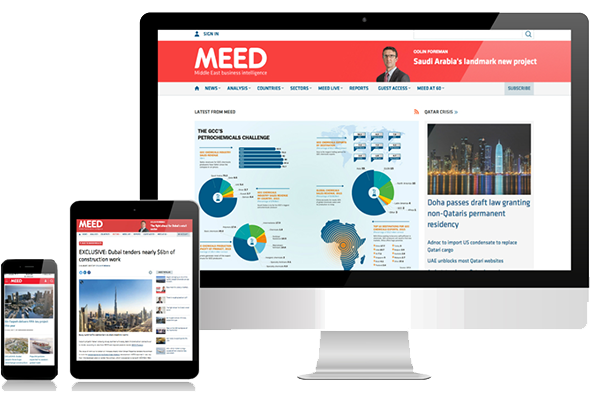
Related Articles
-
 Oman’s growth forecast points upwards
Oman’s growth forecast points upwards24 December 2025

MEED’s January 2026 report on Oman includes:
> COMMENT: Oman steadies growth with strategic restraint
> GVT & ECONOMY: Oman pursues diversification amid regional concerns
> BANKING: Oman banks feel impact of stronger economy
> OIL & GAS: LNG goals galvanise Oman’s oil and gas sector
> POWER & WATER: Oman prepares for a wave of IPP awards
> CONSTRUCTION: Momentum builds in construction sectorTo see previous issues of MEED Business Review, please click herehttps://image.digitalinsightresearch.in/uploads/NewsArticle/15306449/main.gif -
 December 2025: Data drives regional projects
December 2025: Data drives regional projects23 December 2025
Click here to download the PDF
Includes: Top inward FDI locations by project volume | Brent spot price | Construction output
MEED’s January 2026 report on Oman includes:
> COMMENT: Oman steadies growth with strategic restraint
> ECONOMY: Oman pursues diversification amid regional concerns
> BANKING: Oman banks feel impact of stronger economy
> OIL & GAS: LNG goals galvanise Oman’s oil and gas sector
> POWER & WATER: Oman prepares for a wave of IPP awards
> CONSTRUCTION: Momentum builds in construction sectorTo see previous issues of MEED Business Review, please click herehttps://image.digitalinsightresearch.in/uploads/NewsArticle/15306140/main.gif -
 Local firm bids lowest for Kuwait substation deal
Local firm bids lowest for Kuwait substation deal22 December 2025
The local Al-Ahleia Switchgear Company has submitted the lowest price of KD33.9m ($110.3m) for a contract to build a 400/132/11 kV substation at the South Surra township for Kuwait’s Public Authority for Housing Welfare (PAHW).
The bid was marginally lower than the two other offers of KD35.1m and KD35.5m submitted respectively by Saudi Arabia’s National Contracting Company (NCC) and India’s Larsen & Toubro.
PAHW is expected to take about three months to evaluate the prices before selecting the successful contractor.
The project is one of several transmission and distribution projects either out to bid or recently awarded by Kuwait’s main affordable housing client.
This year alone, it has awarded two contracts worth more than $100m for cable works at its 1Z, 2Z, 3Z and 4Z 400kV substations at Al-Istiqlal City, and two deals totalling just under $280m for the construction of seven 132/11kV substations in the same township.
Most recently, it has tendered two contracts to build seven 132/11kV main substations at its affordable housing project, west of Kuwait City. The bid deadline for the two deals covering the MS-01 through to MS-08 substations is 8 January.
https://image.digitalinsightresearch.in/uploads/NewsArticle/15305745/main.gif -
 Saudi-Dutch JV awards ‘supercentre’ metals reclamation project
Saudi-Dutch JV awards ‘supercentre’ metals reclamation project22 December 2025
The local Advanced Circular Materials Company (ACMC), a joint venture of the Netherlands-based Shell & AMG Recycling BV (SARBV) and local firm United Company for Industry (UCI), has awarded the engineering, procurement and construction (EPC) contract for the first phase of its $500m-plus metals reclamation complex in Jubail.
The contract, estimated to be worth in excess of $200m, was won by China TianChen Engineering Corporation (TCC), a subsidiary of China National Chemical Engineering Company (CNCEC), following the issue of the tender in July 2024.
Under the terms of the deal, TCC will process gasification ash generated at Saudi Aramco’s Jizan refining complex on the Red Sea coast to produce battery-grade vanadium oxide and vanadium electrolyte for vanadium redox flow batteries. AMG will provide the licensed technology required for the production process.
The works are the first of four planned phases at the catalyst and gasification ash recycling ‘Supercentre’, which is located at the PlasChem Park in Jubail Industrial City 2 alongside the Sadara integrated refining and petrochemical complex.
Phase 2 will expand the facility to process spent catalysts from heavy oil upgrading facilities to produce ferrovanadium for the steel industry and/or additional battery-grade vanadium oxide.
Phase 3 involves installing a manufacturing facility for residue-upgrading catalysts.
In the fourth phase, a vanadium electrolyte production plant will be developed.
The developers expect a total reduction of 3.6 million metric tonnes of carbon dioxide emissions a year when the four phases of the project are commissioned.
SARBV first announced its intention to build a metal reclamation and catalyst manufacturing facility in Saudi Arabia in November 2019. The kingdom’s Ministry of Investment, then known as the Saudi Arabian General Investment Authority (Sagia), supported the project.
In July 2022, SARBV and UCI signed the agreement to formalise their joint venture and build the proposed facility.
The project has received support from Saudi Aramco’s Namaat industrial investment programme. Aramco, at the time, also signed an agreement with the joint venture to offtake vanadium-bearing gasification ash from its Jizan refining complex.
Photo credit: SARBV
https://image.digitalinsightresearch.in/uploads/NewsArticle/15305326/main.gif -
 QatarEnergy LNG awards $4bn gas project package
QatarEnergy LNG awards $4bn gas project package22 December 2025
QatarEnergy LNG, a subsidiary of state-owned QatarEnergy, has awarded the main engineering, procurement, construction and installation (EPCI) contract for a major package for the second phase of its North Field Production Sustainability (NFPS) project.A consortium comprising the Italian contractor Saipem and state-owned China Offshore Oil Engineering Company (COOEC) has secured the EPCI contract for the COMP5 package. The contract value is $4bn, with Saipem declaring its share to be worth $3.1bn.
Milan-headquartered Saipem said the contract will run for about five years. The scope of work comprises engineering, procurement, fabrication and installation of two compression complexes, each including a compression platform, a living quarters platform, a flare platform supporting the gas combustion system, and the related interconnecting bridges. Each complex will have a total weight of about 68,000 tonnes.
Offshore installation operations will be carried out by Saipem’s De He construction vessel in 2029 and 2030.
MEED previously reported that the following contractors submitted bids for the NFPS phase two COMP5 package:
- Larsen & Toubro Energy Hydrocarbon (India)
- McDermott (US)
- Saipem/China Offshore Oil Engineering Company (Italy/China)
QatarEnergy LNG, formerly Qatargas, is said to have issued the tender for the NFPS phase two COMP5 package in the first quarter of the year.
Contractors submitted technical bids for the COMP5 package in late June, while commercial bids were submitted by 8 October, as per sources.
Based upon initial evaluation of bids by QatarEnergy LNG, L&TEH has emerged as the lowest bidder for the COMP5 package, followed by McDermott, with the consortium of Saipem and COOEC in third place, MEED reported in late October.
In the weeks following that, the project operator is said to have engaged all bidders for a final round of negotiations, during which the consortium of Saipem and COOEC is believed to have “clinched the deal”, according to sources.
The detailed scope of work on the COMP5 package covers the EPCI work on the following:
- Two gas compression platforms, each weighing 30,000-35,000 tonnes, plus jacket
- Two living quarters platforms, plus jacket
- Two gas flare platforms, plus jacket
- Brownfield modification work at two complexes
NFPS scheme
QatarEnergy’s North Field liquefied natural gas (LNG) expansion programme requires the state enterprise to pump large volumes of gas from the North Field offshore reserve to feed the three phases of the estimated $40bn-plus programme.
QatarEnergy has already invested billions of dollars in engineering, procurement and construction works on the two phases of the NFPS project, which aims to maintain steady gas feedstock for the North Field LNG expansion phases.
The second NFPS phase will mainly involve building gas compression facilities to sustain and gradually increase gas production from Qatar’s offshore North Field gas reserve over the long term.
Saipem has been the most successful contractor on the second NFPS phase, securing work worth a total of $8.5bn.
QatarEnergy LNG awarded Saipem a $4.5bn order in October 2022 to build and install gas compression facilities. The main scope of work on the package, which is known as EPCI 2, covers two large gas compression complexes that will comprise decks, jackets, topsides, interconnecting bridges, flare platforms, living quarters and interface modules.
The gas compression complexes – CP65 and CP75 – will weigh 62,000 tonnes and 63,000 tonnes, respectively, and will be the largest fixed steel jacket compression platforms ever built.
Following that, Saipem won combined packages COMP3A and COMP3B of the NFPS project’s second phase in September last year.
The scope of work on the combined packages encompasses the EPCI of a total of six platforms, approximately 100 kilometres (km) of corrosion resistance alloy rigid subsea pipelines of 28-inches and 24-inches diameter, 100km of subsea composite cables, 150km of fibre optic cables and several other subsea units.
Separately, QatarEnergy LNG awarded McDermott the contract for the NFPS second phase package known as EPCI 1, or COMP1, in July 2023. The scope of work on the estimated $1bn-plus contract is to install a subsea gas pipeline network at the North Field gas development.
In March this year, India’s Larsen & Toubro Energy Hydrocarbon (LTEH) won the main contract for the combined 4A and 4B package, which is the fourth package of the second phase of the NFPS project and is estimated to be valued at $4bn-$5bn.
The main scope of work on the package is the EPCI of two large gas compression systems that will be known as CP8S and CP4N, each weighing 25,000-35,000 tonnes. The contract scope also includes compression platforms, flare gas platforms and other associated structures.
LTHE sub-contracted detailed engineering and design works on the combined 4A and 4B package to French contractor Technip Energies.
NFPS first phase
Saipem is also executing the EPCI works on the entire first phase of the NFPS project, which consists of two main packages.
Through the first phase of the NFPS scheme, QatarEnergy LNG aims to increase the early gas field production capacity of the North Field offshore development to 110 million tonnes a year.
QatarEnergy LNG awarded Saipem the contract for the EPCI package in February 2021. The package is the larger of the two NFPS phase one packages and has a value of $1.7bn.
Saipem’s scope of work on the EPCI package encompasses building several offshore facilities for extracting and transporting natural gas, including platforms, supporting and connecting structures, subsea cables and anti-corrosion internally clad pipelines.
The scope of work also includes decommissioning a pipeline and other significant modifications to existing offshore facilities.
In addition, in April 2021, QatarEnergy LNG awarded Saipem two options for additional work within the EPCI package, worth about $350m.
QatarEnergy LNG awarded Saipem the second package of the NFPS phase one project, estimated to be worth $1bn, in March 2021.
Saipem’s scope of work on the package, which is known as EPCL, mainly covers installing three offshore export trunklines running almost 300km from their respective offshore platforms to the QatarEnergy LNG north and south plants located in Ras Laffan Industrial City.
Saipem performed the front-end engineering and design work on the main production package of the first phase of the NFPS as part of a $20m contract that it was awarded in January 2019. This provided a competitive advantage to the Italian contractor in its bid to win the package.
https://image.digitalinsightresearch.in/uploads/NewsArticle/15305330/main2239.jpg

